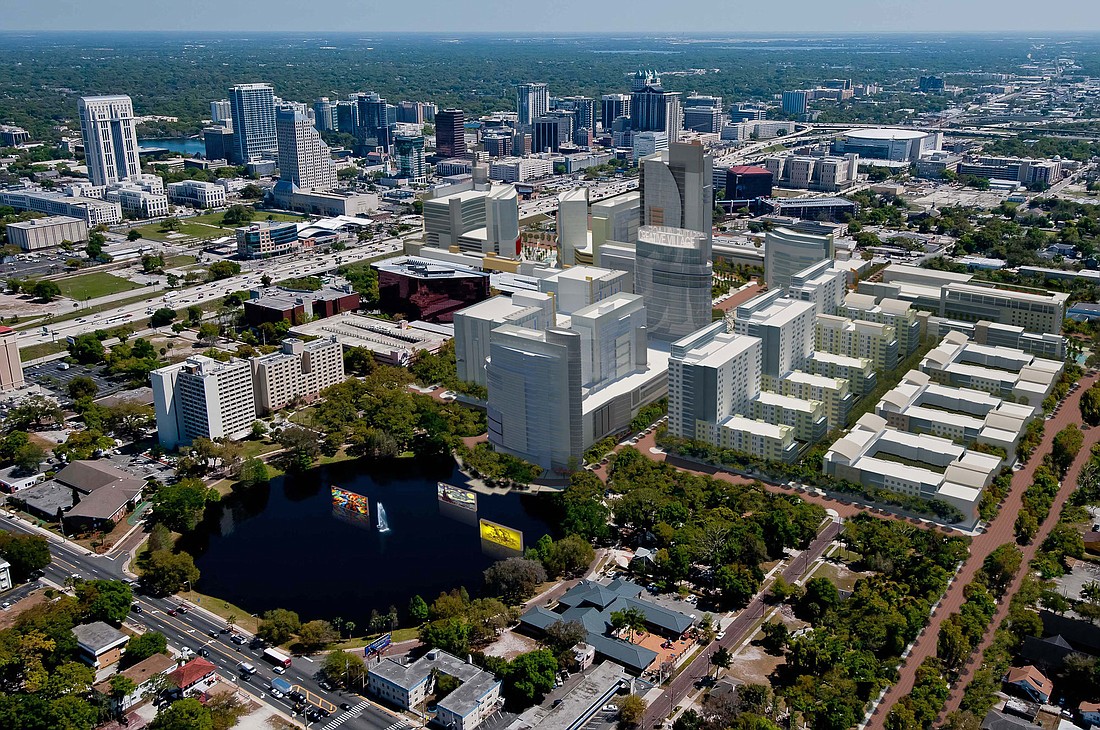- May 8, 2025
-
-
Loading

Loading

The developer of the former Sarasota Quay property is moving forward with plans to convert the 14.5-acre waterfront site into a vibrant district that embraces the surrounding neighborhoods and environment, project representatives say.
On Feb. 3, the city held a community workshop to discuss the project, now known as Sarasota Bayside. Although the meeting was focused on plans for the city to vacate a right-of-way portion, the team working with property owner GreenPointe Communities shared new insights on the vision for developing the long-vacant downtown parcel.
Already, the group had revealed it would pursue the entitlements already granted to the property following previous attempts at development. That included up to 695 condominium units, 189,050 square feet of retail space, 20,000 square feet of office space and a 175-room hotel.
However, the layout of this project will differ significantly from the last attempt to build on the Quay site. At the workshop, those involved with the project expressed a desire to create a new district that welcomes the public and embraces the arts and entertainment scene in Sarasota.
Instead of a distinct project, the project team pitched a community that would create strong links to neighboring districts.
“We want it to extend out into the neighborhoods and vice versa,” said Timothy Baker, principal with Orlando-based design firm Baker Barrios. “There’s no wall where they’re over here and we’re here.”
GreenPointe is still a few weeks away from submitting formal plans for the property to the city, but a clearer picture of the project and its scope is beginning to develop. Project representatives said Sarasota Bayside would likely be built out over the course of a decade, working in phases from south to north.
Baker Barrios has experience planning mixed-use districts within the confines of existing cities. The group recently designed Creative Village, a project comprising more than 60 acres in downtown Orlando, as well as The Yard at Ivanhoe Village, a residential-heavy complex in the same city.
For Sarasota Bayside, Baker drew comparisons to Nashville, Tenn., and Austin, Texas, where musicians and other live performances are common sights on street corners. The designers said the project would include public access to the waterfront, part of a required multiuse recreational trail, in addition to other public spaces for events.
The project will likely capitalize on the 18-story maximum height in the downtown bayfront district, but the Feb. 3 meeting emphasized the focus on a pedestrian-friendly experience. The previous proposal concentrated the development in three 18-story towers. In addition to spreading out the project across the site, planners are focused on making sure the buildings work on a human scale.
Chuck Bell, another principal with Baker Barrios, pointed to Miami as an example of elegant architecture from a distance that failed to function on the ground level.
“It was as sterile as you could possibly get,” Bell said. “We want to stay away from all of that.”
In addition to submitting plans to the city in the coming weeks, the Sarasota Bayside team also plans to have a visioning workshop with the public this spring. The group will share more information on the project and seek to solicit feedback from residents as plans continue to develop.
“We really try to grab onto the core elements that will make this place feel real, feel timeless, and have that special connectivity to the community,” Baker said.
Some residents raised concerns about the increased traffic associated with the project proposal.
Sarasota Bayside would include roadway access onto U.S. 41 from Fruitville Road, Fourth Street and Fifth Street. There would also be a road into the district from Boulevard of the Arts east of U.S. 41.
Residents near Boulevard of the Arts said there’s a recurring traffic issue on that street, particularly following large events. When the Quay site is developed, those residents fear Boulevard of the Arts will become flooded.
“When the Van Wezel lets out, it causes a tremendous traffic jam without the Quay traffic,” said Robert Winter, a resident of Condo on the Bay. “It’s going to be very hard for people to get out.”
Project representatives said a traffic study still ongoing, but they believe offering multiple points of access would help balance the traffic generated.
“If it’s not convenient to come out through Boulevard of the Arts, they’re going to have opportunities to come out of other facilities,” said traffic engineer Frank Domingo.
The city plans to put in a series of roundabouts along U.S. 41, including one on Fruitville Road that has not yet been designed. City engineer Alex DavisShaw said preliminary studies haven’t accounted for a significant uptick in pedestrian activity across the road, but that could be examined in the next phases of planning.
GreenPointe Regional President Rick Harcrow said increased traffic could also be addressed in the ongoing master planning effort for city-owned land surrounding the Van Wezel.
He acknowledged the concern from residents and said there is a mutual interest in avoiding any traffic issues.
“It doesn’t benefit our project to have a congested roadway,” Harcrow said.